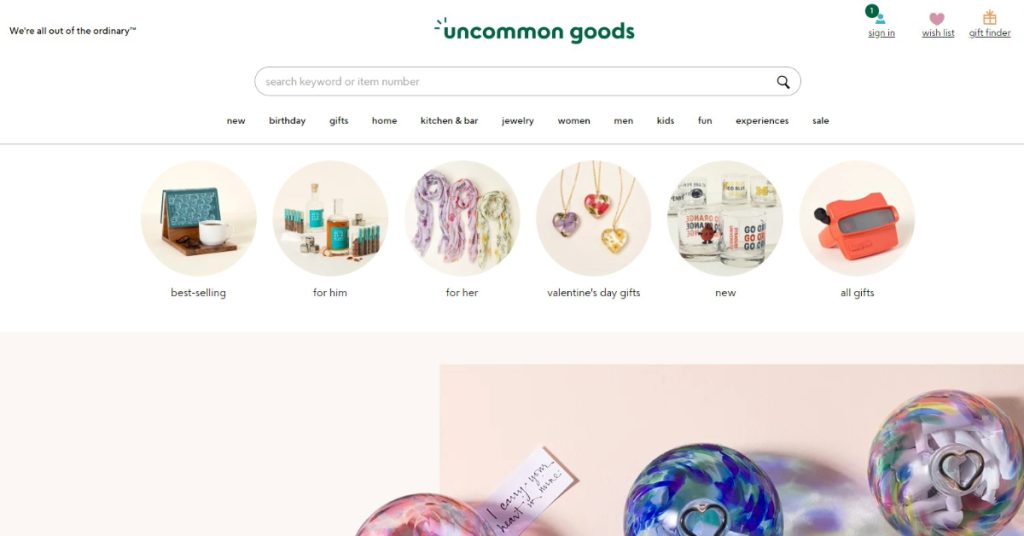
Uncommon Goods marketplace case study: book a demo to start yours
Uncommon Goods is an online store recognized for its one-of-a-kind and artistically crafted items, which encompass handmade and artisan products, personalized presents, and unique home decorations, all with a focus on sustainability and ethical procurement.
If you’d like to start your own marketplace like Uncommon Goods, you’re facing a buy vs build decision. So before you decide to build it in-house on top of Spree open-source, consider using the feature-rich Enterprise Edition cutting your time-to-market to a few weeks.
Build vs Buy a marketplace?
Open-source offers many benefits, including full ownership and the ability to tailor freely, but these come at a price. The process of developing a complete marketplace solution is both time-intensive and costly, typically requiring several months or even years. This understanding is based on our experiences with a range of marketplace initiatives.
Unless you have a significant amount of funding, it’s generally more advantageous to use a ready-made, all-in-one marketplace solution like Vendo, as suggested by an expert who has long charged for marketplace development work.
Back to the Uncommon Goods marketplace case study
Uncommon Goods began in 1999 as a unique online shop connecting artists and creators with shoppers. They’re known for their special and one-of-a-kind gifts and experiences. Also they carefully choose these unique items, like fire pits for making s’mores indoors, t-shirts that light up and can be drawn on, and tote bags made from baseball uniforms.
One big problem they had was dealing with a lot of packages during busy times, especially the larger ones that were costing them more money. To solve this, they teamed up with Pitney Bowes, who came up with a plan to efficiently handle more packages and save money.
The goal of this partnership was to manage a large number of packages during peak times, improve deliveries, and reduce their stock. Pitney Bowes also helped make their packages smaller, saving even more money.
Uncommon Goods has seen significant growth in delivering their products to customers. In 2022, they shipped twice as much as before and can now deliver to 90% of the U.S. in just two days. This was possible thanks to a partnership with ITS Logistics, who had a flexible plan for handling the busy holiday season and shipping a lot more products compared to 2021. In fact, they shipped 49% more products through ITS in 2022 than in 2021.
Uncommon Goods is also deeply committed to being socially and environmentally responsible. They focus on selling items that are handmade in the U.S. or come from fair trade organizations. They treat their employees well and care about the environment. Also they avoid products made from leather, feathers, or fur, and working with suppliers who prioritize sustainability.
Moreover, they encourage sellers on their platform to use eco-friendly packaging and offer help with barcodes if needed. This dedication to sustainability and ethical practices is a core part of their business values.
How to emulate Uncommon Goods marketplace success?
If you aim to mirror the success of Uncommon Goods, consider getting your marketplace up and running quickly, within weeks, not months. Assess how your product selection resonates with your audience’s needs. Keep tweaking your methods for gaining customers, using real-world feedback as your guide.
Experiment with the market before you fully invest in building it yourself.
Here’s how to get started:
- Book a marketplace demo call: We’ll help you evaluate Spree for your marketplace needs and get started with the Enterprise Edition
- Customize your Storefront: Use the drag & drop page builder or custom CSS
- Onboard Brands: Invite your brands or choose brands from our catalog
- Select Products: Curate products and collections manually or automate it
- Embed products: Make your content, newsletters, social media shoppable
- Get Paid: Get paid as soon as products are shipped by the brands
- End-to-end automation: Brands sync, fulfillment, payouts, invoicing, taxes
When you’ve tried all that and it works, start thinking about building your own, custom-made marketplace project based on Spree Commerce. First, by decoupling the storefront and going headless with marketplace API, and later with your own backend, if you decide you really need it. Just lift and shift the storefront.
Nobody has to know what’s under the hood, right?



